Landing Page: A Key to Online Success
A landing page is one of the most crucial elements of your website, especially when it comes to turning visitors into customers. It plays an essential role in digital marketing campaigns and can significantly affect conversion rates. At Ergasti, we understand the importance of designing an effective page. We will explore what a landing page is, the key elements that make it successful, the different types of landing pages, and how they compare to a homepage.
What is a Landing Page?
It is a dedicated web page designed specifically for a marketing or advertising campaign. When a visitor clicks on an ad, email, or search engine result, they are “landing” on this page. Unlike a homepage, which serves as an introduction to your entire website, It is focused on a single goal or call to action (CTA), such as signing up for a newsletter, downloading an ebook, or purchasing a product. The goal of a landing page is to convert visitors into leads or customers, making it a vital part of any online marketing strategy.
What Are the Key Elements of a Successful Landing Page?
To achieve the desired results from a It, certain elements need to be in place. Here are the key components of an effective page:
-
Clear and Compelling Headline
The headline is the first thing visitors see, and it needs to capture their attention instantly. A clear, concise, and value-driven headline sets the tone for the entire page and encourages users to stay and learn more. -
Subheadline
A subheadline provides additional context or detail, explaining the value of the offer in more depth. It should support the headline and create a cohesive flow of information. -
Call to Action (CTA)
The CTA is perhaps the most important part of a landing page. It tells users what you want them to do next, such as “Buy Now,” “Sign Up,” or “Download.” A strong CTA is clear, actionable, and stands out from the rest of the content. -
Visuals and Media
Incorporating relevant images, videos, or graphics can make the landing page more engaging. Visuals should support the message, clarify the offer, and build trust. -
Social Proof and Testimonials
Social proof, such as customer testimonials, reviews, and case studies, can help build trust and credibility. Positive feedback from previous customers reassures visitors that they are making the right decision. -
Lead Capture Form
If the goal of the landing page is to collect user data (e.g., emails, names), a simple and easy-to-complete lead capture form is essential. Keep the form short and to the point to increase conversion rates. -
Minimal Distractions
A successful page minimizes distractions. It should have a clean layout with no navigation links or external links that could divert attention away from the call to action. -
Value Proposition
A strong value proposition highlights what makes your offer unique and why the visitor should act now. It clearly explains how the offer solves the visitor’s problem or meets their need.
What Are the Different Types of Landing Pages?
It can be classified into several types depending on the goal of the campaign. Here are the main types:
-
Lead Generation Landing Pages
These are designed to collect user information in exchange for something of value, such as a free trial, a guide, or a webinar. They are commonly used for email marketing campaigns and are focused on generating leads. -
Click-Through Landing Pages
Click-through landing pages are often used in e-commerce. They offer a product or service, with the goal of getting the user to click on a button to make a purchase. These pages are usually more straightforward with a prominent call to action. -
Squeeze Pages
Squeeze pages are typically used to collect email addresses. They often offer something free in return for the user’s contact information and are typically simple, with minimal distractions. -
Product Landing Pages
These pages focus on a specific product or service, providing all the necessary details to convince the visitor to make a purchase. They are designed to showcase the features, benefits, and price of a product in a compelling way.
Landing Page vs Home Page
While both the landing page and the homepage are critical elements of a website, they serve very different purposes. A homepage is typically a broad overview of your business, offering links to various sections of the website. It serves as an introduction to your brand and provides a pathway to all other areas of the site.
In contrast, a landing page is focused on a specific goal. It’s a standalone page that drives the visitor toward a single action. There are no distractions, and everything on the page is optimized to guide the user to one clear call to action. A landing page is meant to be more targeted, and it doesn’t require users to navigate through other pages.
In essence, while the homepage gives an overview of what your business is about, the landing page is designed to convert visitors into customers or leads.
Conclusion
In conclusion, landing pages are an essential tool for any online marketing strategy. They play a crucial role in converting visitors into leads or customers, and a well-designed landing page can significantly increase your conversion rates. At Ergasti, we understand the power of effective landing pages and the key elements that make them successful. Whether you’re running a PPC campaign or launching a product, your page should be optimized for the best possible outcome.
By understanding the importance of It, utilizing the right components, and focusing on conversion goals, you can improve the effectiveness of your marketing efforts and drive better results for your business.

